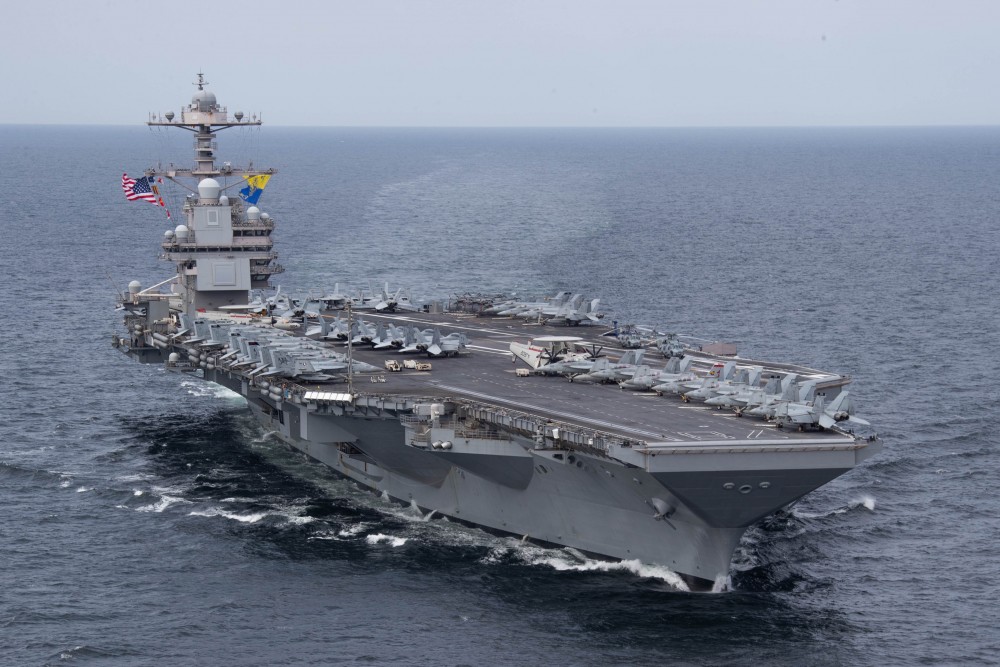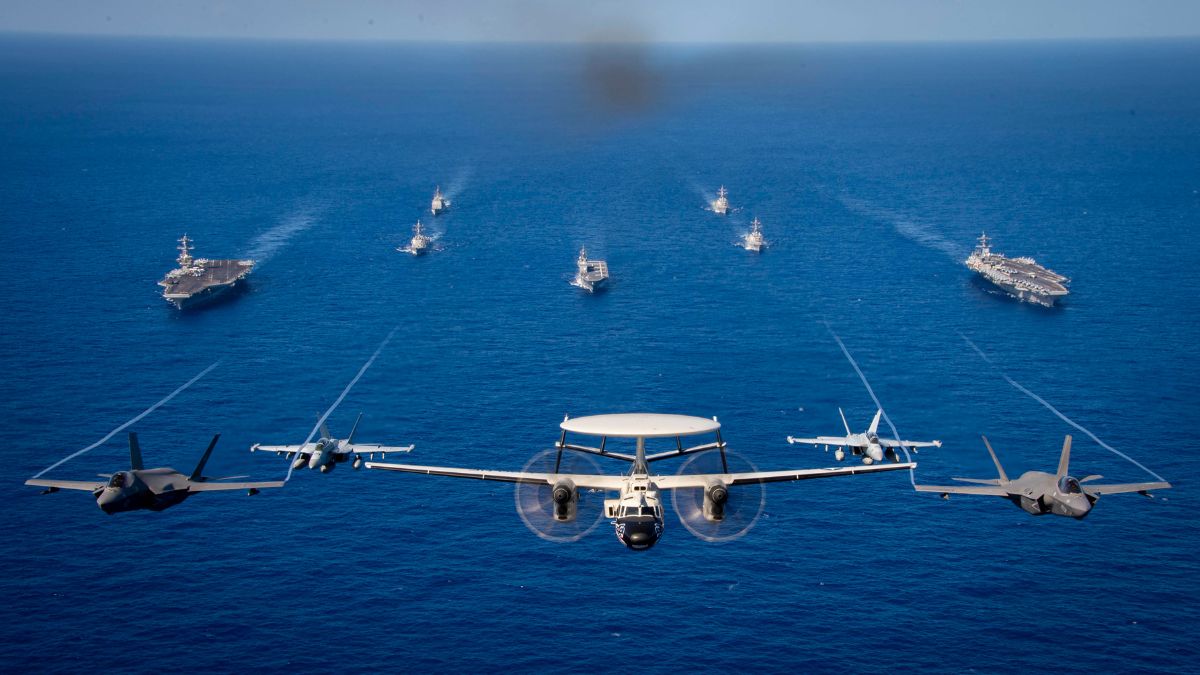US-Russia-China Tensions: Subs, Patrol Aircraft Not Enough, US Navy Wants CSGs, Destroyers In The Arctic

The US Navy hopes the Pentagon’s Arctic Strategy will allow enhanced naval presence in the emerging flashpoint in the region. This includes surface ships and elements from aircraft carrier strike groups “north of the Arctic circle” rather than just submarines and maritime patrol aircraft—an extremely rare deployment if the Department of Defense (DoD) makes room for it.
The move marks how the Polar region might graduate from a benign theater of contest between Russia, China, and the US, where previous official documents addressing climate change, communications, and trade are laying the foundation for a broader military strategy.
The US Navy Fleet Forces Command chief, Admiral Daryl Caudle said the additional “basing facilities” to conduct “replenishment operations and sustain forces” there must now be accompanied by “surface” presence. The Department of Defense (DoD), which is expected to release its Arctic Strategy in April, is coordinating with various departments and military arms, each of which has “separate interests and priorities above the Arctic Circle,” according to Defense News.
The report added, “All the services have their own operational requirements and acquisition needs related to Arctic operations (that involve) five combatant commands.” These are the US Northern Command, the European Command, the Indo-Pacific Command, the Transportation Command, and the Strategic Command.
White House’s 2022 Arctic Strategy Set The Ball Rolling
The News had reported how a surprise Russian and Chinese naval exercise early in August last year was held just outside American territorial waters near the Aleutian Islands, ringing alarm bells in Washington.

However, this was preceded by the Biden White House’s October 2022 National Strategy for the Arctic Region, which identified enhanced “observation” and “awareness” to aid “real-time decision-making” as among four areas of focus. The other three include the long-term impacts of climate change, economic development, and international partnerships.
The document said, “We will invest in modernized domain awareness to detect and track potential airborne and maritime threats and improve sensing and observational capabilities, including for sea ice, ship traffic, and weather.” The USN appears to be hoping the DoD will view this framing and consider conventional naval force projection a suitable tool to meet the administration’s goal.
It would also be in the interest of the Biden administration to officialize a policy that would be difficult for a possibly new Trump Presidency to reverse – assuming he wins the elections. This is because the former President has avowedly been reconciliatory towards Russia and hostile towards Washington, involving itself with NATO and European security affairs.
The last known report of a US carrier operating in the Arctic Circle was in June 2023, with the USS Gerald R. Ford participated in the Arctic Challenge exercise. That drill saw more NATO jets above the Arctic Circle than at any time since the breakup of the Soviet Union, where 150 jets from 14 nations practiced in the skies over Norrbotten in northern Sweden. The carrier sailed with the cruiser USS Normand and the destroyer USS Rampage.
‘Submarines, Planes Not Enough; About Time We Get Destroyers’
Expanding on what he hopes would best achieve the deterrence and enhanced presence in the Arctic Circle, Caudle told journalists that the USN “would need to take a look at its access, basing and overflight access across the Arctic.” He said that at present, the US heavily relies on its European allies and partners for the purpose.
![]()
The key is to monitor the Arctic, conduct replenishment operations to sustain forces operating there, and have some sort of personnel recovery capability. Today, the bulk of the US Navy’s Arctic presence comes from the submarine fleet that operates under the ice and the P-8A Poseidon maritime patrol and anti-submarine warfare plane that flies above.
The subsurface/underwater element, the leading tool of the USN’s current Arctic operations, is overseen by the Undersea Warfare Directorate under the office of the Chief of Naval Operations (CNO). The Undersea Warfare Development Center, meanwhile, is in charge of the doctrinal aspect of Arctic warfare.

“Is that correct? Does that get after the total picture? No, it does not,” Caudle told reporters, noting that these efforts didn’t account for aircraft carriers, surface ships, or amphibious ships with Marines operating in the region and their needs.
He said he hopes the USN invests in the full breadth of requirements to support the Arctic presence, specifying that “nothing demonstrates presence better than a surface ship.” Acknowledging that USN submarines do deter adversaries’ military behavior, he would like to see some portion of every deploying carrier strike group spend at least a little time north of the Arctic Circle.
- Questions and Answers
- Opinion
- Story/Motivational/Inspiring
- Technology
- Art
- Causes
- Crafts
- Dance
- Drinks
- Film/Movie
- Fitness
- Food
- Jeux
- Gardening
- Health
- Domicile
- Literature
- Music
- Networking
- Autre
- Party
- Religion
- Shopping
- Sports
- Theater
- Wellness
- News
- Culture
- War machines and policy

